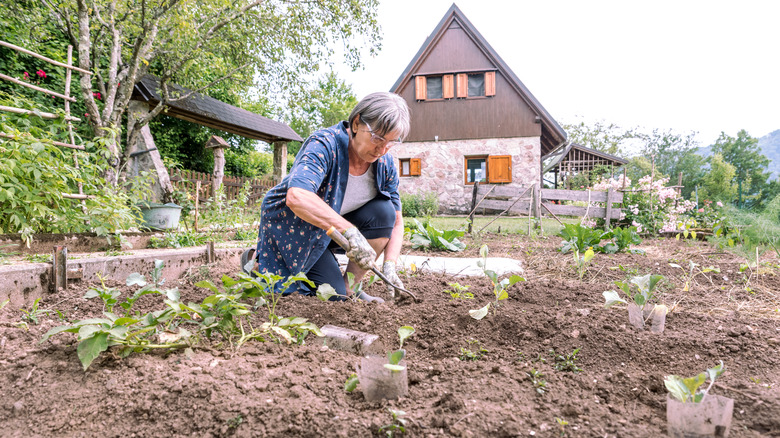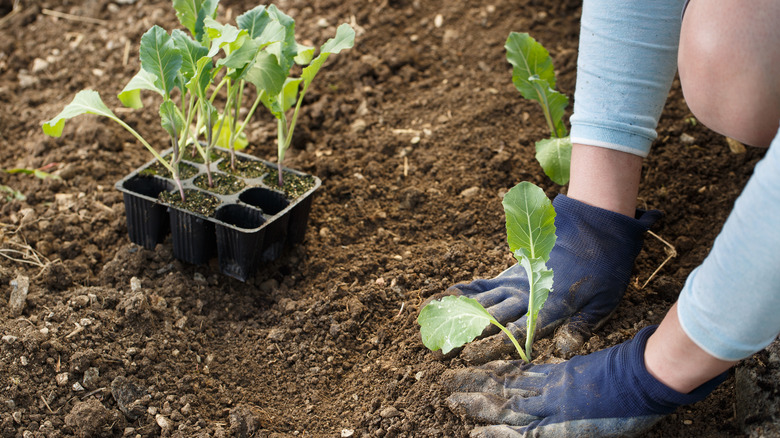Growing cauliflower in your home garden takes a bit of work, and your success will really come down to your understanding of temperature. Cauliflower grows best in cool temperatures — ideally 60 to 65 degrees, and no higher than 75 degrees. In the north and on the east coast, these temperatures traditionally occur during early spring and summer, when humidity hasn’t made its way to your garden yet. In the south or on the west coast, temperatures remain high throughout fall and winter. If that’s the case, the best time to plant cauliflower would be early winter, when temperatures drop from the 80s and 90s to the 60s and 70s.
Cauliflower, which comes from the plant species Brassica oleracea, is used in almost every cuisine. From Indian curries to North African stew to Southern comfort food, there are a multitude of possibilities that come from growing this vegetable in your backyard. As farmers and home gardeners alike prepare for their first row of winter crops, vegetables such as cauliflower, broccoli, and carrots will begin to grow. That’s why it’s essential to know the best temperature and soil conditions — and all the best planting tips — before growing cauliflower in your beloved winter garden.
Transplanting in winter

Since cauliflower doesn’t thrive in hot and sunny temperatures, you must create a foolproof gardening plan to ensure it grows big and healthy. One way to achieve healthy cauliflower in the cold seasons is through transplanting, which allows the seeds to grow indoors before transferring them to an outdoor garden. Once the cauliflower has grown at least two sets of true leaves (not seed leaves, which grow first), it’s time to introduce it to sunlight. Most outlets suggest doing this around two weeks before the last frost.
If temperatures are too hot, cruciferous vegetables such as cauliflower will sprout faster, which is why some need to rethink growing the popular vegetable in their garden. Unfortunately, planting vegetables too early (and in the wrong temperature) can stunt growth, cause wilting, and increase their susceptibility to disease. Beyond their preference for colder temperatures, growing cauliflower at the wrong time can affect our diet and open us up to diseases like E. coli, Salmonella, and Listeria. Don’t worry — there are steps you can take to ensure your cauliflower grows safely.
Seeding and caring for your cauliflower

To get started planting, spend about 4 to 6 weeks seeding the vegetables indoors. When planting and replanting soil, ensure the pH balance is between 6.5 and 7.5 before providing essential nutrients to each cauliflower head. Start by creating a small hole in the soil before placing the cauliflower seeds of your choice about ½ inch inside — this could include multiple types of cauliflower, including white, green, and purple. Continue fertilizing these seeds weekly with a nitrogen-based fertilizer before transitioning them to the garden (once temperatures are low enough). Space the plants approximately 18 to 24 inches apart from one another, with 30 inches between each row. With enough room to grow, you’ll ensure these cauliflower seeds grow as big and tall as possible. Just make sure to protect your plants from sun when they’re about the size of a golf ball.
Cruciferous vegetables also depend on more obvious gardening advice, such as watering 1 to 2 inches per week and allowing it to soak through the soil. While cauliflower can handle cold temperatures, however, it’s hardy to 26 degrees Fahrenheit and cannot handle much colder. Once the cauliflower head has a diameter of about 6 to 8 inches, it’s ready for harvesting.